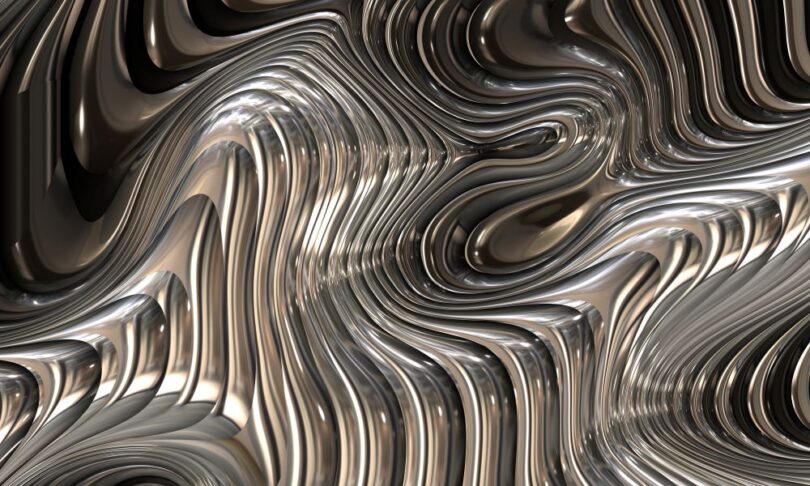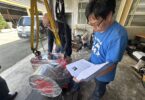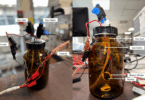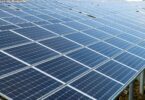Electrified Thermal Solutions (ETS), a Boston-based pioneer of innovative thermal energy storage solutions, receives Technology-to-Market Plus Up extension funding from the U.S. Department of Energy (DOE) Advanced Research Projects Agency-Energy (ARPA-E). ETS’ Joule Hive Thermal Battery (JHTB) successfully completed the final milestones required for this significant Supporting Entrepreneurial Energy Discoveries (SEED) funding by cycling its E-Brick heated circuit to a temperature of 1,700°C (3,092°F) in ambient air operating conditions. The JHTB achieved a Technology Readiness Level (TRL) 6 by blowing air across the bricks’ surface, demonstrating the system can deliver the heat to industrial processes. Following a $5M award selection from the DOE Industrial Efficiency and Decarbonization Office and a $35M award selection from the DOE Office of Clean Energy Demonstrations, ETS expects to achieve TRL 8 in 2025 with a megawatt-scale Joule Hive Thermal Battery commercial demonstration. This will enable ETS to decarbonize the heat processes of its industrial partners in the cement, chemicals, food and beverage, and consumer goods manufacturing sectors.
While carbon emissions from power generation and transportation continue to fall, emissions from heavy industry are still increasing. Industrial heat processes are responsible for approximately 20% of global greenhouse gas emissions. The vast majority of industrial heat demand is currently met by burning fossil fuels, particularly natural gas. ETS has developed the most cost-competitive zero-carbon alternative; the company’s Joule Hive Thermal Battery (JHTB) can harness clean energy-derived electricity to generate, store, and deliver zero-carbon heat to even the hottest industrial processes.
Developed over almost a decade at MIT, ETS’ JHTB provides the lowest-cost decarbonized heat by either using onsite renewable electricity or charging from the grid during off-peak hours when electricity is the least expensive. The JHTB will be the first thermal energy storage system to durably deliver up to 1,800°C (3,275°F) heat from electricity, hot enough for even the most demanding industrial applications. In demonstrating that ETS’ E-Brick circuits can generate the required temperatures directly from electricity while durably and continuously cycling between low and high temperatures is a key milestone to commercialization and achieves the vision jointly set out by ETS and ARPA-E. ETS’ JHTB will make zero carbon, cost-competitive, on-demand, flame-temperature industrial heat a reality for heavy industry, including steel, cement, glass and chemical companies.
“We are quickly knocking down the barriers to electrifying high-temperature heat processes for industry,” said Daniel Stack, Co-founder and CEO of Electrified Thermal Solutions. “Historically, the inability of state-of-the-art metal, ceramic, or graphite heating elements to survive at the highest temperatures that heavy industry requires has been a show-stopper for the electrification of steel, cement, glass and other super-hot industrial processes. By slightly altering the composition of the age-old firebrick, we’ve created a heating element that can durably deliver clean heat at temperatures hot enough for any industrial process. ARPA-E support has enabled us to prove this with factory-manufactured bricks in anticipation of rapid commercialization of our thermal energy storage system.”
“This milestone marks an important step in opening the door to decarbonization of industrial heat processes around the world,” said Dr. Peter de Bock, Program Director at ARPA-E. “ETS achieved this breakthrough as part of its milestones from an ARPA-E SEED award in 2021, and this latest funding will support business development efforts to advance commercialization of ETS’ Joule Hive Thermal Battery.”
Following this successful milestone, ETS is now moving towards building a 1MW, 5MWh JHTB commercial demonstration system, which will be operational in 2025. ETS will immediately follow this with first-of-a-kind deployments at customer sites in support of its goal of delivering 2GWs of thermal power capacity by 2030. In doing so, ETS will advance towards its mission to decarbonize heavy industry with electrified heat.







